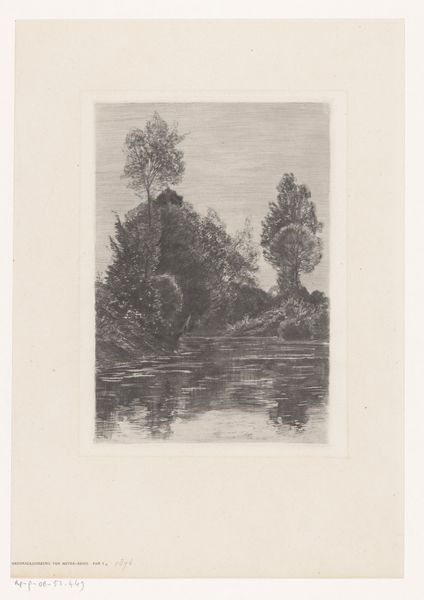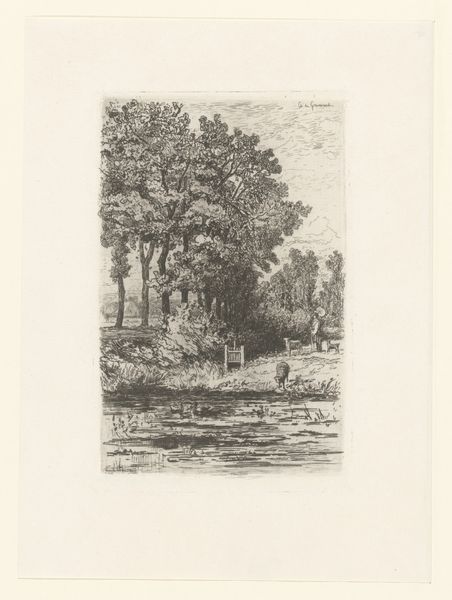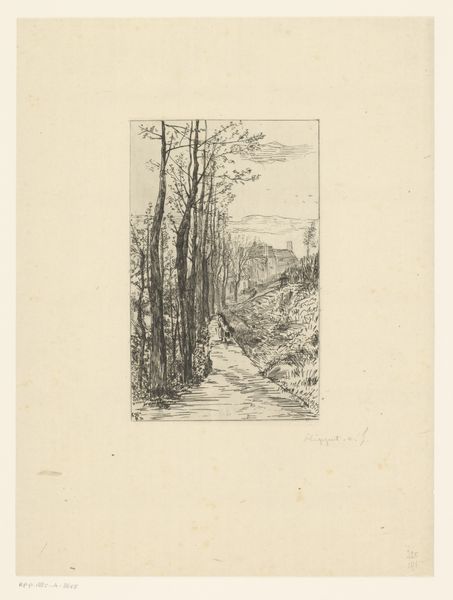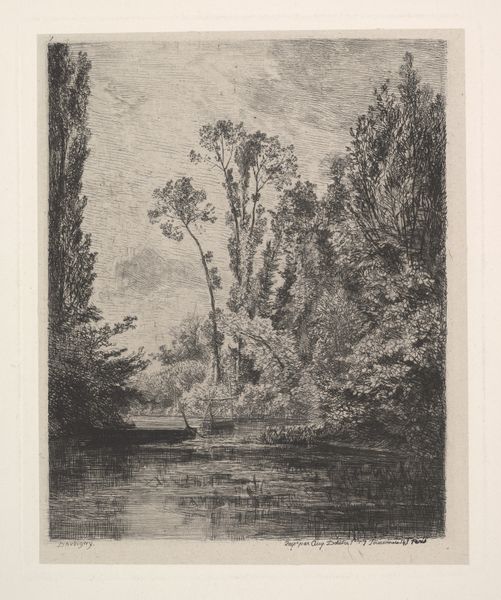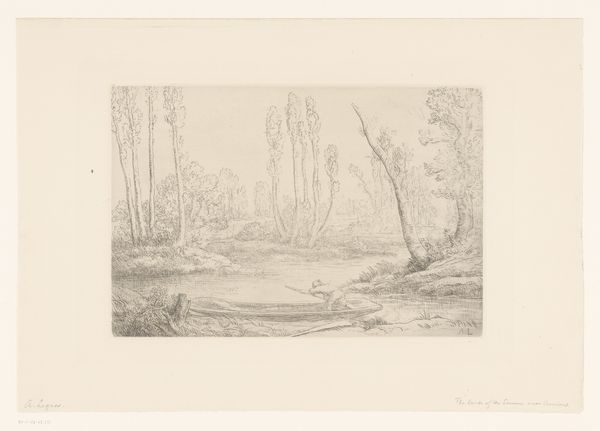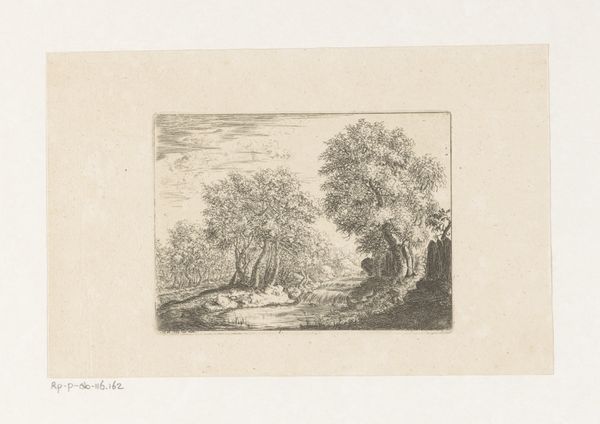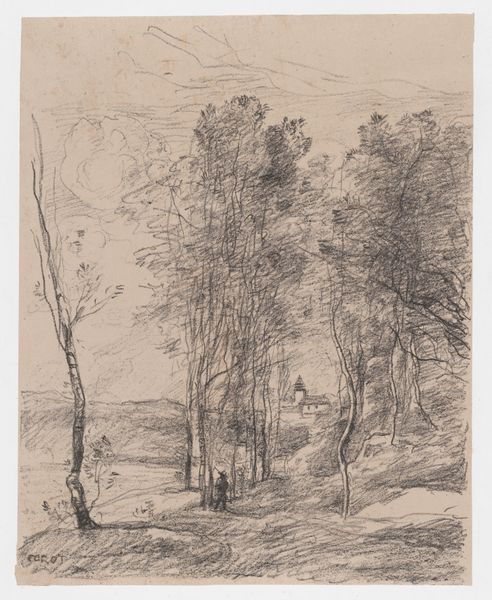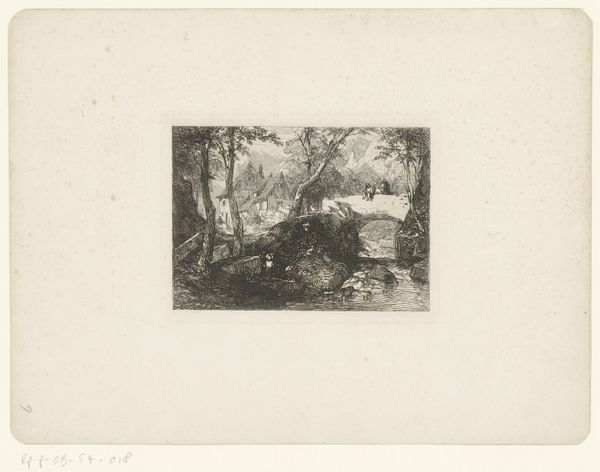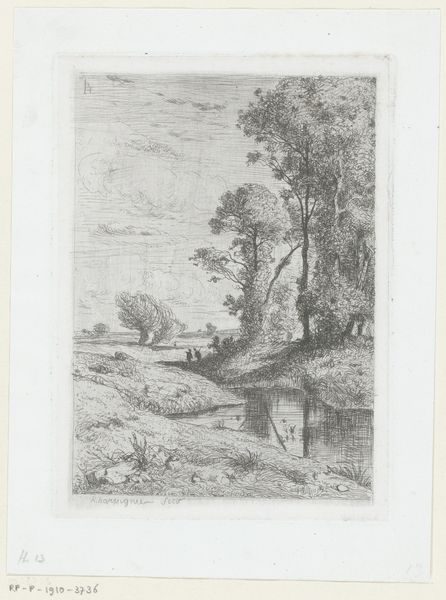
print, etching
# print
#
etching
#
landscape
#
etching
#
realism
Dimensions: height 193 mm, width 125 mm
Copyright: Rijks Museum: Open Domain
Curator: So, what captures your attention right away in Albert Dillens’ "Landschap met huis aan het water"? I'm especially interested in how this print—made through etching—functions as both art and product. Editor: Instantly, I’m transported. There's such a gentle, melancholy mood here, don't you think? The reflection in the water, that lone little house almost swallowed by the trees… it whispers of solitude. It feels a little haunting! Curator: Absolutely. The landscape as a signifier of social narratives is pretty pronounced here, wouldn't you say? Note Dillens' precise etching work; it evokes an engagement with natural materials, and perhaps a comment on rural life from 1854-1909. Editor: I agree! It's almost photographic, that detail. It reminds me of a half-remembered dream. Yet, there’s a palpable reality in the reflections, the way the light filters through the trees, it's masterfully done, bringing a dream into a tangible experience! What’s fascinating, to me, is to imagine what the role of the artisan might have been as these scenes circulated into the market economy through these very prints! Curator: Exactly! We see an exploration of material and the labor process. Each etched line contributes to both the image and the potential mass reproducibility. Its success resides precisely within those tensions between the artisanal and the commodified. The artist had the artisanal skills for producing a design that also could exist outside a strictly formal Art market as such, with an appeal to diverse, broad tastes. Editor: Hmm. Now you've given me something to chew on: The loneliness seems a little less isolating, now that I imagine all of those iterations across different social settings… fascinating. Thank you for these thoughts on landscape’s material presence. Curator: My pleasure, perhaps considering it with those elements of labour and distribution offers further dimensions for consideration.
Comments
No comments
Be the first to comment and join the conversation on the ultimate creative platform.

